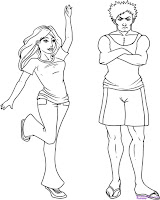 After recently a puppy
joint our household once again it proved that from the moment we are born we
have been predestined and taught how to manipulate. All small kids (the same
goes for puppies) use basically 24 hours per day to watch, observe and
consequently ‘calculate’ what is good for them and how to achieve it.
After recently a puppy
joint our household once again it proved that from the moment we are born we
have been predestined and taught how to manipulate. All small kids (the same
goes for puppies) use basically 24 hours per day to watch, observe and
consequently ‘calculate’ what is good for them and how to achieve it.
Well, assuming that is
so and also knowing that manipulation has a bad reputation, how could we
distinguish manipulation from a persuasion (does not have a bad reputation)
that we use as well?
In my view a manipulation is, by definition, a form of persuasion and vice versa. Might be that manipulation is more of a short-term strategy, but consequently, manipulation and persuasion are all about getting someone to do something that you want them to do. Isn’t it?
From persuasion point
of view I would say that it distinguishes from manipulation in a small detail: influencing
someone because of something that is ‘good’ for the person or, better said that
the person may be persuaded to perceive such doing as beneficial or good.
Therefore, in this relation the trust in the persuader is the fundamental
element for the effective persuasion. And trust is mostly missing or abused in
manipulation.











